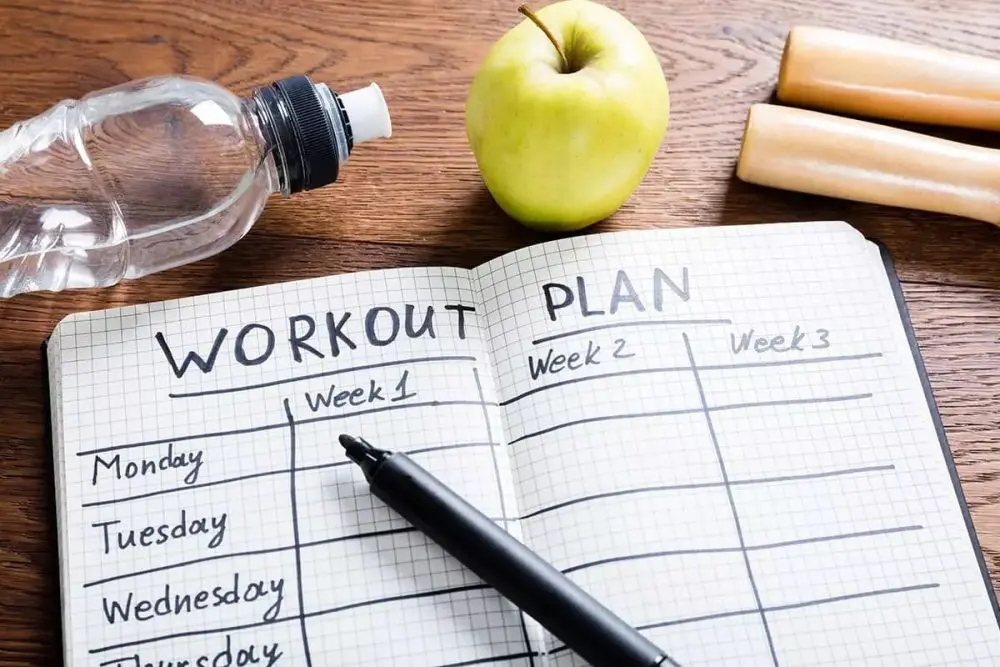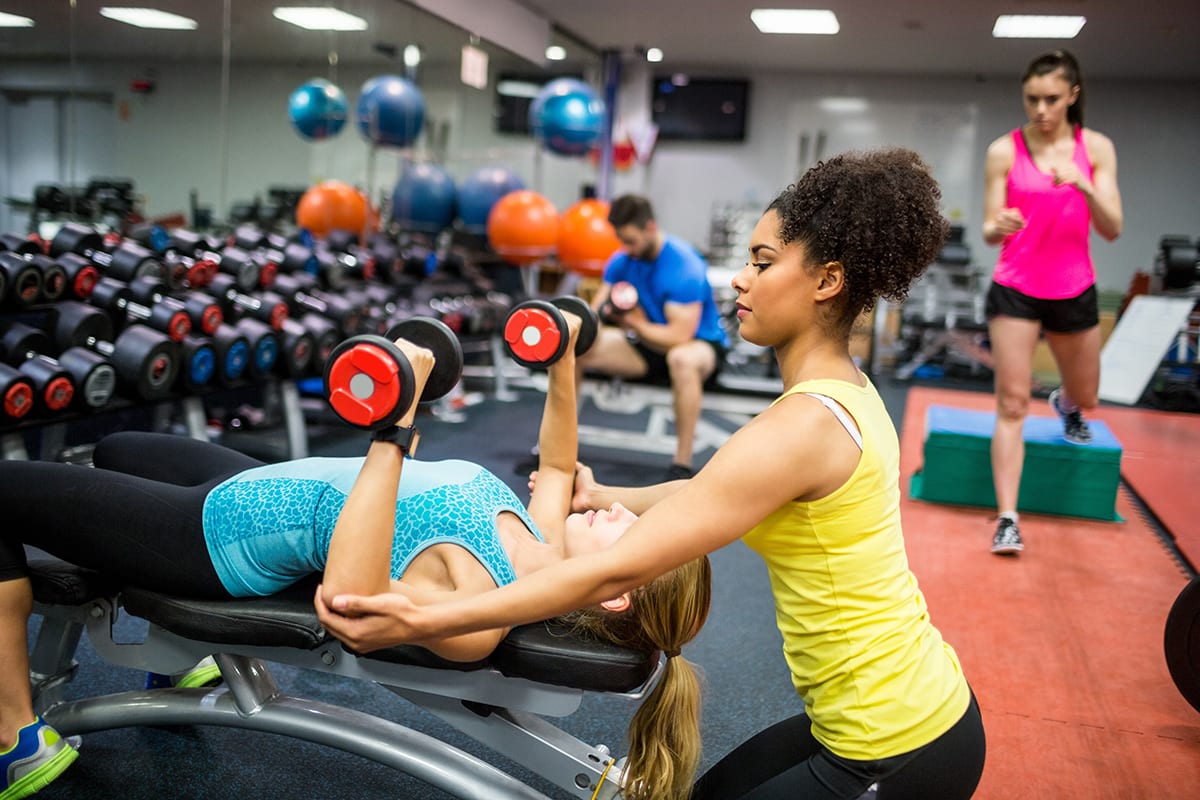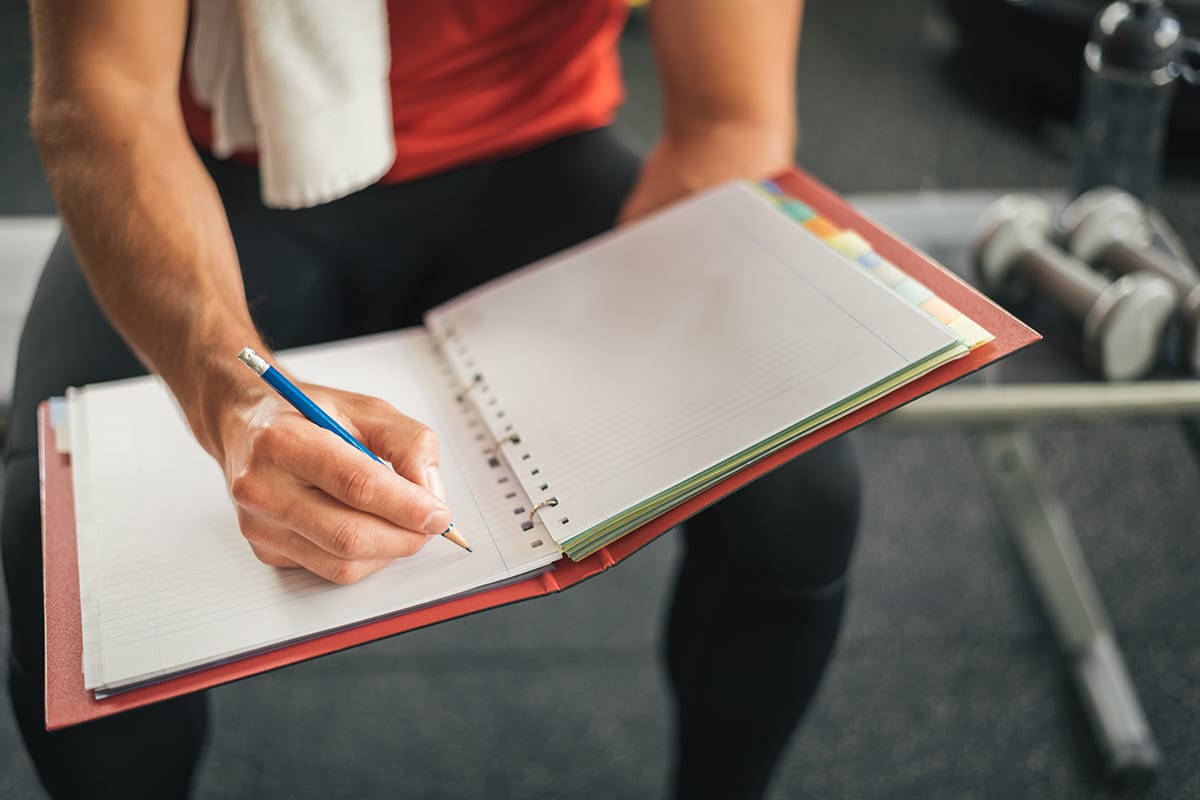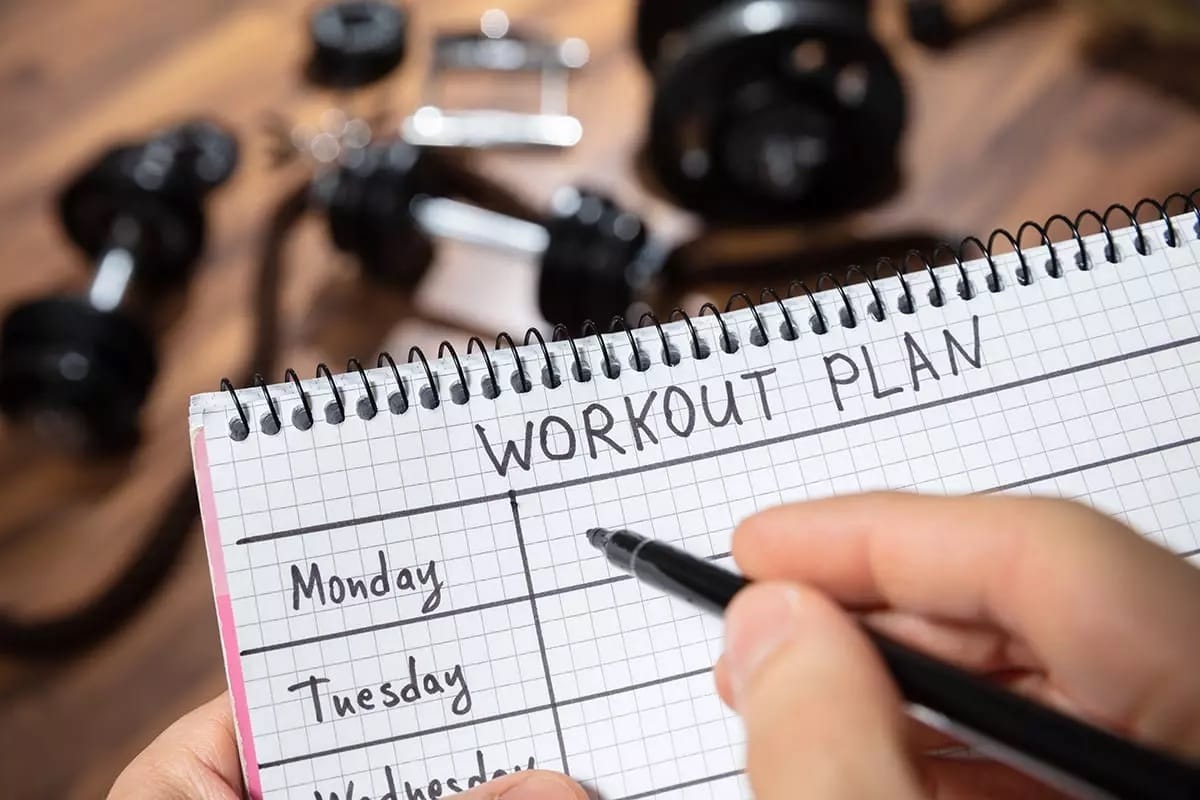Last Updated on February 16, 2025
So, you want to reach your fitness goals but don’t know exactly know where to begin? It’s understandable. Sometimes we can set our goals, and it seems like such a simple path. But once we start our journey to reach those goals, things can get a little complicated. Just as with anything in life, a goal without a plan is just a wish…or however, the saying goes. And that’s where a workout planner comes in handy – it’s incredibly helpful for tracking your progress.
Basically, what I’m saying is that in order to reach our goals (fitness especially), it’s important to plan, stick to that plan, and then reassess our progress. If the progress we have made is up to par, then we can continue business as usual. If not then, we must make the necessary changes. In this way, a workout planner can be used as a ledger by which we hold ourselves accountable for our own actions and efforts.
But first things first – you must have a plan. In order to plan out a good routine (regardless of your goal), it must be well-rounded. What I mean is that you’re focusing on your body rather than over-doing specific areas or aspects.
Assessing Your Progress

No matter what your fitness goal is, start off by gathering a baseline for performance. If you want to find your fitness level in the safest way possible, I would recommend what is known as a “Fit Test”. This is where you would typically perform the following:
- First, one minute of squats
- Second, one minute of pushups
- Third, one minute of TRX rows
- And finally, one minute of crunches or plank if possible
All these exercises should be done without breaking good form. Be sure to rest approximately 30-60 seconds between each before moving onto the next. When you have completed this routine, document the number of repetitions performed. As you progress through your program, you will re-administer the Fit Test and notice that your numbers have improved. Typically, you will reassess this test every four-to-eight weeks (depending on how new to fitness you are).
A more advanced way to test your fitness level would be to assess your one or 10 rep maximum for any or all the major exercises. For this, you would need a good background in performing these exercises in order to avoid injury. In most cases, the major exercises that you would test are the Bench Press, Overhead Shoulder Press, Bent Over Row, Deadlift, and Back Squat.
You can either choose a weight that you can do a maximum of 10 reps or one rep (with a friend to spot you for safety). You would assess these numbers less frequently, maybe every six-to-eight weeks. That frequency should be enough, as strength training is much more taxing on your nervous system than calisthenics, plyometrics, or any exercise that requires less weight.
The last test that is very effective and commonly used to assess one’s fitness level would be a Three-Minute Step Test. This involves the client testing their pretest heart rate for one minute. Following this, they would use a 12-inch step-to-step, placing both feet onto it and then back down to the ground for three straight minutes at a brisk pace. At the end of the three minutes, you would assess the heart rate again for one minute. Ideally, you would test this every four-to-eight weeks before your Fit Test listed above.
Creating Your Own Workout Planner

After you have found your baseline fitness level, you can now build out your personalized workout planner. According to American College of Sports Medicine, an individual should work out 150 minutes per week at a moderate intensity in order to be healthy (1). It’s important to note that you want to be balanced in your approach so that you’re at least exercising each major muscle group evenly to avoid overuse of specific joints.
Therefore, you should split your days in a few different ways, but the key is that you do so in a way that fits your lifestyle. That means if you can only exercise three days per week, then you would split each exercise session up into 50 minutes each. Another option would be to do five days per week at 30 minutes a piece, but it’s really based on your lifestyle and what works best for you. I highly recommend that you allow each body part to rest at least 36-48 hours before exercising it again. For those of you that are squat enthusiasts, this squat calculator could help in tracking your reps.
Weekly Workout Schedule Options
Option 1: Three Workouts split into 50 minutes each
- Monday: 10 minutes of cardio followed by Upper Body
- Tuesday (Active Rest): walking, recreational sport, etc.
- Wednesday: 10 minutes of cardio followed by Lower Body
- Thursday: Rest
- Friday: 15 Minutes of cardio followed by full body workout
- Sat/Sunday: Active Rest Days
Option 2: Four Workouts split into 40 minutes each
- Monday: Upper Body
- Tuesday: Lower Body
- Wednesday: Rest
- Thursday: Full Body
- Friday: Cardio
- Sat/Sunday: Active Rest Days
Option 3: Five Workouts split into 30 minutes each
- Monday: Upper Body
- Tuesday: Lower Body
- Wednesday: Active Rest
- Thursday: Upper Body
- Friday: Lower Body
- Saturday: Cardio
- Sunday: Rest
Following the Right Techniques

How do you know what kind of changes to make? The best way is to look back at the work that you have done and make necessary adjustments. If you simply just play a guessing game of “I think I did this wrong, so I’m going to try this”, you’ll just run around in circles and make no objective progress. The key is to be OBJECTIVE (basically, honest with yourself) when it comes to your progress or lack thereof. It’s important to note that making changes to your workout routine every four-six weeks is optimal to avoid plateaus (2).
This kind of “change” is also known as periodization. This means essentially mixing up your routine by reducing the amount of weight you’re doing for an exercise while simultaneously increasing the number of repetitions for more hypertrophy (muscle enlargement) rather than muscular strength. You can also increase the demand on a muscle group by shortening your rest periods between sets for greater tension in the muscle.
Yet another great technique is changing the order of the exercises. You would essentially perform exercises that you usually perform at the end of your workout right at the beginning, forcing muscle confusion. This requires your muscles to work in a way that they’re not used to, which forces adaptation.
Finally, one of the most overlooked ways to build muscle is performing the “eccentric” portion of the rep. For example, when you’re lowering the weight onto your chest during a bench press, you’re bringing it down slow and controlled rather than just letting it bounce off of your chest. Another example would be doing a squat: instead of letting your butt fly down to the ground until it hits the back of your ankles and returning back to the top with the shear blunt collision of your glutes and lower legs, you should count to three on the way down in order to force the “eccentric” contraction of your quads. It’s all about making these kinds of changes in order to keep your body guessing and constantly adapting to what you’re doing.
Measuring Progress

To start off, one of the easiest ways to track fitness progress is by taking monthly anthropometric measurements. These can include weekly progress photos; checking weight; doing a “clothing fit test”; specific tests to assess range of motion/flexibility; body fat percentage check (if you have a device); and recording weight, reps, sets, or workout duration.
For the purpose of this article, we’re going to focus on the most common goal: body composition and performance (strength, endurance, and muscle). In order to track workout performance, we need to be sure that we’re tracking our sets, reps, workout duration, and intensity. For our aesthetic goals, we can track our body anthropometric measurements (hips, waist, chest, arms, and thighs) and our weight; take progress photos (front and side); or (if you are fancy) check body fat percentage via an Omron handheld device, specialized scales, or caliper test. However, for the sake of simplicity, we will leave the body fat measurement tests out of this one and focus on the other tests.
Clothing Fit Test
Find your “goal” T-shirt, pants, blouse, etc. Then try that on and assess how easily it comes on/off, how you feel while wearing it, and if you would wear it out in public given the two answers above. Come back to that a month from now and answer those same questions to see if the answer changes.
Checking Weight
Do this one first thing in the morning without clothes (typically every two weeks will suffice). You don’t want to become obsessed with weighing in every day because your weight can fluctuate daily and cause discouragement.
Anthropometric Measurements
Download the Measurements Guide here.
Progress Photos
Take this at the end of every week, as it is a great indicator of how your body really is changing. Take this photo preferably on a “timer” setting. This will allow you to place your phone/camera down in a spot where you can see your whole body and then hold your arms straight out to your sides making a “T” with your body. Take one facing the phone or camera and then another from a side angle. Compare them to the previous week’s pictures, and eventually, you can make a collage showing the change.
Performance (sets, reps, duration, and intensity)
Self-Assessment and Reflection

Essentially, if you’re seeing no progress, it should be time to make a change sooner than later. Typically, you should notice a change in the direction that you’re desiring, whether that’s an increase or decrease in weight, measurements, fitness level, or cardio strength. This is something you can check up on every one-to-two months. However, if there is no change whatsoever, then I recommend increasing the dosage of whatever change you’re making. For example, instead of working out 150 minutes a week, increase to 180 minutes a week. Rather than doing most of those minutes doing weights, add more cardio. Simply by doing a little more of what you’re already doing, you can see all the difference. When it comes to strength, I recommend taking your rest days seriously and avoiding all other activity, as it is extremely taxing on the body.
In conclusion, it’s important to track you progress. Gather a baseline number for where you’re at, set a goal for where you want to be in the long-term, and finally focus on executing each workout by recording your outcomes and reassessing your performance on a weekly and monthly basis for results. Remember – be as objective as possible. If you aren’t, you’re only deceiving yourself. And use the downloadable forms as templates to guide your tracking!
- Beginner’s Guide on How to Make a Your Own Workout Plan
- How to Create a Convenient Home Workout Plan That Works for You
- 12 Simple Exercises to Get You Back in Shape
This article is part of the “Workout Planning” series. Click here to learn more.
References
- https://www.acsm.org/blog-detail/acsm-blog/2017/05/16/science-of-exercise
- https://www.acefitness.org/education-and-resources/lifestyle/blog/1210/why-is-it-important-to-vary-my-workout-routines
Tyler Guzzo is the creator and driving force behind Guzzo Fitness Systems. With roots in physical therapy and personal training, Tyler has spent over a decade helping clients reclaim their health, confidence, and vitality. A former clinic and gym trainer, he turned his passion into a thriving coaching business—now serving clients nationwide through online programs and virtual boot camps. Tyler’s expertise lies in crafting individualized fitness and nutrition strategies, offering vibrant live classes, and building strong accountability communities. His empowering approach is especially impactful for busy professionals and moms, focusing on sustainable habits and real-world results. Beyond fitness, Tyler is known for giving back through charity-driven fitness experiences that benefit his local Florida community.
- This author does not have any more posts.

